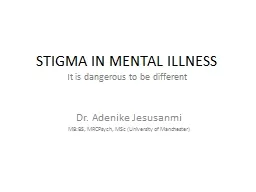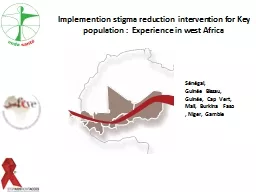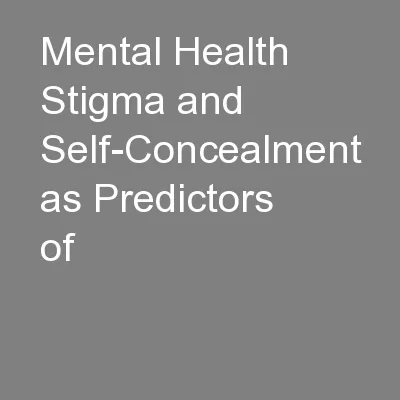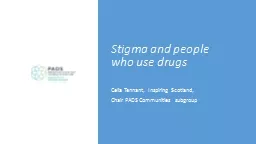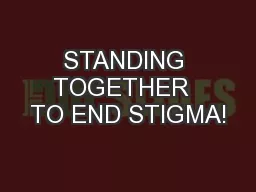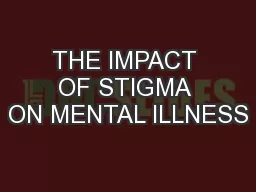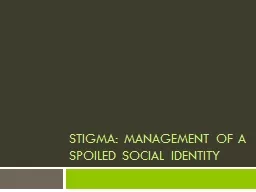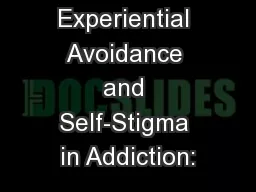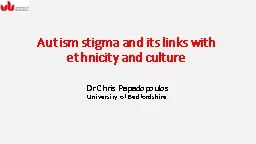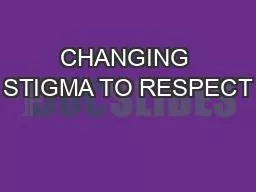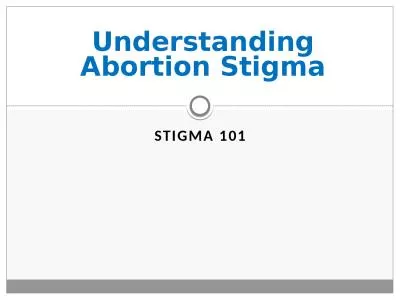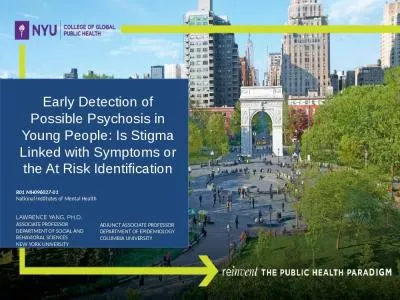PPT-STIGMA IN MENTAL
Author : jane-oiler | Published Date : 2017-06-20
ILLNESS It is dangerous to be different Dr Adenike Jesusanmi MBBS MRCPsych MSc University of Manchester What is stigma Stigma can be traced back to early Greek
Presentation Embed Code
Download Presentation
Download Presentation The PPT/PDF document "STIGMA IN MENTAL" is the property of its rightful owner. Permission is granted to download and print the materials on this website for personal, non-commercial use only, and to display it on your personal computer provided you do not modify the materials and that you retain all copyright notices contained in the materials. By downloading content from our website, you accept the terms of this agreement.
STIGMA IN MENTAL: Transcript
Download Rules Of Document
"STIGMA IN MENTAL"The content belongs to its owner. You may download and print it for personal use, without modification, and keep all copyright notices. By downloading, you agree to these terms.
Related Documents

